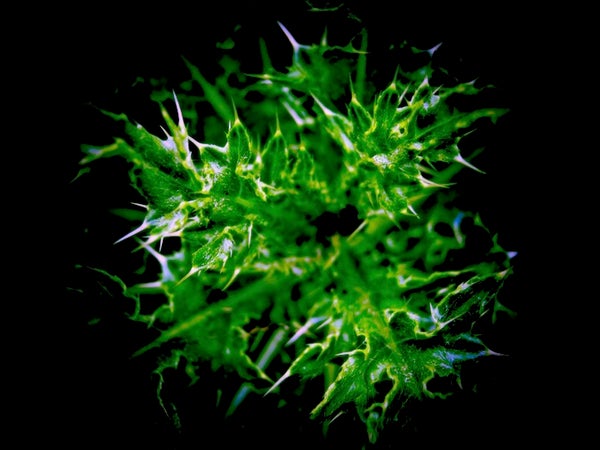This article was published in Scientific American’s former blog network and reflects the views of the author, not necessarily those of Scientific American
Crater Lakes on Titan
Some of the liquid methane filled lakes on Saturn's largest moon seem to have such steep and tall sides that it's hard to explain their formation through a process of erosion (as karstic lakes). A new model published in Nature Geoscience suggests that these lakes instead form after pockets of subsurface liquid nitrogen warm up and turn into high pressure gas that explodes outwards. These nitrogen aquifers could form during prolonged epochs of colder climate on Titan, where surface temperatures might reach down to 81 Kelvin. Later warm periods could then cause the pockets to erupt violently to make craters on the surface that fill up with methane.
Another Interstellar Comet?
On supporting science journalism
If you're enjoying this article, consider supporting our award-winning journalism by subscribing. By purchasing a subscription you are helping to ensure the future of impactful stories about the discoveries and ideas shaping our world today.
After all the excitement about 'Oumuamua, there seems to be another candidate for an interstellar visitor zooming through our solar system. The object, C/2019 Q4 (Borisov), appears to be on a hyperbolic (unbound) orbit that will pass no more than 300 million kilometers from the Sun on December 8th 2019. Its high velocity of about 42 kilometers a second suggests an origin well away from the Sun and a future trajectory back out in interstellar space. The cometary nucleus is somewhere between 2 and 16 kilometers across, but thus far we don't know if it shows signs of the tumbling that made 'Oumuamua even more intriguing.
No Hair for Black Holes
A research study published in Physical Review Letters applies a new analysis to LIGO data from the first confirmed gravitational wave detection of a pair of merging black holes, as well as 9 other similar cases. This analysis teases out evidence of a very specific kind of 'ringing' pattern in the gravitational waves that occurs a few milliseconds after the holes merge: a set of two frequencies, or tones, overlaid on each other and representing different vibrational frequencies of the new, larger black hole. The results match the predictions of Einstein's General Relativity and support the hypothesis that black holes have 'no hair' - that their only properties are mass, spin, and electrical charge.
A Damp Exoplanet
Two groups have announced the detection of water vapor in the atmosphere of the exoplanet K2-18b. This world is about nine times the mass of Earth and orbits a low mass star at a distance where temperatures in its atmosphere could allow for the water to also condense into clouds and conceivable be part of a hydrological cycle. But the planet itself looks likely to be a 'mini-Neptune', a world that may have a substantial atmosphere of hydrogen and helium, rather than a world with an atmosphere similar to Earth's in extent and composition. Despite numerous media announcements, this is almost certainly not a 'habitable' planet in any conventional sense of the word. But it is an excellent demonstration of how our astronomical techniques and instruments are on the cusp of probing smaller, and cooler planets that get more and more intriguing from an astrobiological point of view.
